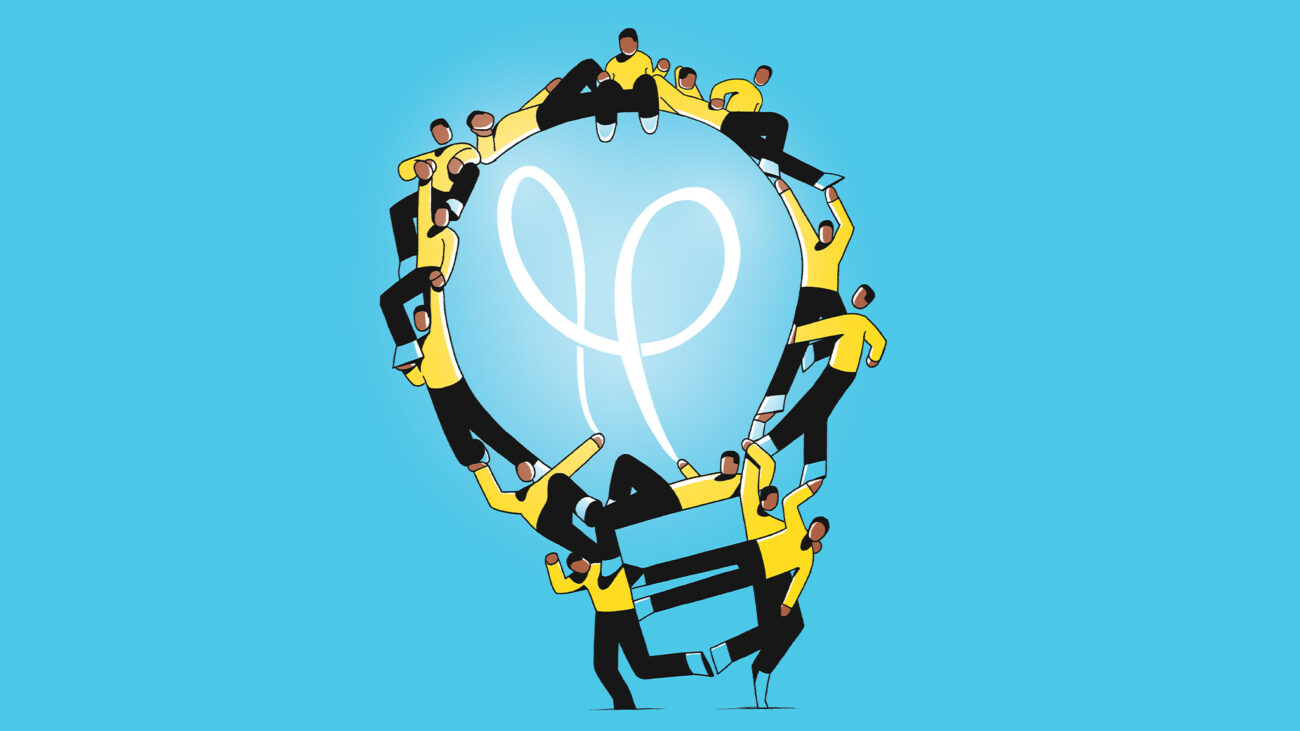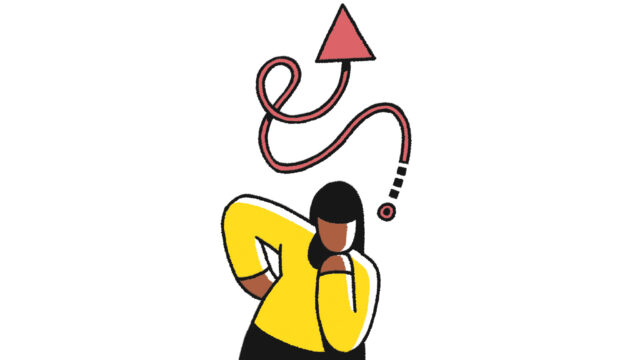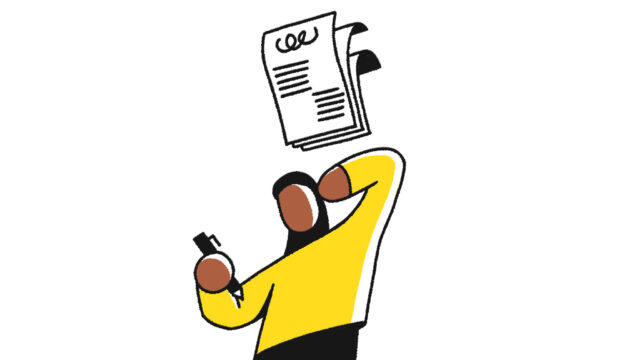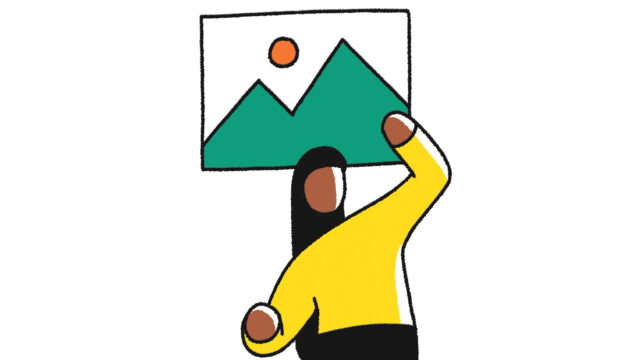Gossip Rant Chat Wa gwan Breaking Scandal Hot off the press Bulletin Dispatches Nachrichten

Imagination multipliers
The financial services market already embraces AI to help it make smarter decisions, hyper-personalise its services, and have more profound, personal conversations with its customers. AI is here to stay. So, as it moves from disruptor to part of the fabric of our lives, how can we ensure we use AI to our best advantage in marketing, advertising, and content creation?
Computer-assisted decision-making and creation have been around for years, but since ChatGPT and similar tools emerged in November 2022, AI fever has gripped the world. Market value has since risen to almost $50 billion as businesses worldwide geared up to embrace AI’s potential—and is expected to hit a scarcely believable $66 billion by the end of the year.1 We are no longer in a time of pilot phases; we’re looking at rapid rollouts everywhere.
Love it or loathe it, AI is a game changer.
AI is here to stay
of marketers globally think that generative AI is an excellent way to test creative that isn’t otherwise measured (Source: Kantar)
of consumers agreed they would trust generative AI information (Source: Forrester)
of respondents expressed the need for more transparency and regulation around the use of generative AI technology in marketing and advertising (Source: Storystream)

CONTENT CURATION BECOMES HYPER-PERSONALISED
Among its many use cases, it has transformed email marketing almost beyond recognition. Users can now tap into a treasure trove of advanced insights and elevate their campaigns into “meaningful dialogues” by deploying sentiment analysis.2 Predictive analytics adoption is surging, and streaming is becoming more “personalised.” It’s already a critical fulcrum of industry heavyweight Netflix’s service. Machine learning algorithms evaluate customer preferences, provide bespoke recommendations, and even tailor promotional artwork based on customers’ viewing habits.
B2B payment solutions provider Adyen utilises AI to optimise revenue, build customer insights, carry out risk management, and much more. With some heavy hitters among its customer base—McDonald’s, Uber, LinkedIn, Booking.com, and more—the fintech is living proof that AI can be a vital tool for business.3
This deeply individual tailoring and the generation of specific experiences or buying journeys in a particular customer demonstrates what is most likely the “killer app” for generative AI—not creating something new out of the ether but tailoring what already exists to someone’s exact preferences—and all in real-time. E-commerce brands like Amazon are already aware of this, and widespread adoption is almost inevitable as AI tools become more embedded in every marketer’s toolkit.

Assisted exploration
According to a McKinsey survey, it is the beginning of the journey where marketers and creatives most realise the value and power of AI.4 Summarising research, producing first drafts or outlines of content, or creating concepts were all listed as the most useful capabilities that sales and marketing teams valued.
We see this, too, in our own practice. Exploring ideas, understanding trends, and conducting initial research are all critical—but time-intensive—parts of the creative process. AI can optimise all these tasks, allowing us to focus on more valuable developments and refinements and making a more substantial final output overall. It’s a fantastic starting point. Visual concept generation is another part of the process that can be enhanced with AI. Typically, creative teams spend a lot of time generating concept visuals so their clients or internal stakeholders can understand and approve the direction. With generative AI, we can create some of these concepts far more quickly, producing them simultaneously and leading to a more vital, focused end idea.
From a client’s perspective, miscommunications or difficulties sharing a concept can lead to delays, as creative teams try to understand what is wanted. With generative AI, clients can show their creatives what they are thinking. As Foundation states: “Basically, it makes it easier for less talented artists to communicate their ideal designs to those who are talented.”5
AI–the ultimate optimisation tool
Exploring ideas, understanding trends, and conducting initial research are all critical—but time-intensive—parts of the creative process. AI can optimise all these tasks.Anthony Wilkinson, Director of Content and Marketing, The Fold Creative
Exploring ideas, understanding trends, and conducting initial research are all critical—but time-intensive—parts of the creative process. AI can optimise all these tasks.

Truth in advertising
Generative AI allows us to depict anything we can imagine more efficiently, which is a fantastic opportunity when used correctly. However, audiences become increasingly disenchanted when AI leads to creativity that promises something that won’t be delivered.
In February 2024, events company House of Illuminati unveiled an unofficial Charlie and the Chocolate Factory-inspired event: Willy’s Chocolate Experience. The Glasgow-based attraction went viral after AI-generated visuals on their website promised a “celebration of chocolate in all its delightful forms”—which turned out to be a derelict venue, shoddy staging, and two Jelly Beans per child.6 It was promptly shut down as furious punters demanded refunds en masse. Willy’s is a cautionary fable about the perils of leaning on generative AI too heavily—
and ensuring that expectation marries up to reality.
The furore surrounding the blockbuster Civil War is another illustration that, increasingly, AI marketing requires a human hand on the tiller. Filmgoers were quick to voice their anger when production company A24 unveiled a series of AI-generated posters depicting apocalyptic scenes that do not appear in the film. Among them is a rendering of the Sphere in Las Vegas as a burned-out husk. Representatives claimed the artwork was intended to “inspire more thought about what such a disaster could look like.”7 The public didn’t seem to agree. Outraged viewers deduced that A24 was whetting appetites under false pretences by promising action that never transpires, tricking customers into handing over their cash. Debate is already raging about how AI threatens to infringe upon the world of art. The Civil War media circus has done nothing to put it to bed.
Companies that openly champion their use of AI and are clear and transparent about their use of the technology see massive success. For example, Nutella worked with Ogilvy & Mather Italia to create 7 million different package artworks made by AI. Every jar of Nutella released in this campaign featured unique artwork, and every jar sold. The fact that AI created the packs became a compelling feature rather than a drawback.
BUILDING A “CENTAUR” CREATIVE TEAM
Initially popularised in the world of chess—after Gary Kasparov was beaten by computer Deep Thought—a “Centaur” team is one in which humans and AI work together on the same team. It turned out that this hybrid team was more effective and could do better than all-human teams and AI opponents working alone. “The human players added strategic thinking and creative interpretations, while AI provided sheer calculation power and probability-based decision-making.”8
Your creative team, whether agency or client-side, can become better when supported, enabled, and enhanced by AI. Rapid prototyping and research can elevate the human spark of creativity, original thought, and subjective understanding, and AI’s ability to create and iterate can be guided by human perception, imagination, and intuition.
Here at The Fold, we’re embracing this hybrid model and working with clients to explore the possibilities this approach has unlocked. We’re convinced that the future lies in blending human creativity with AI augmentation. There’s no replacement for curiosity—that’s why our solutions are original thought, made better by the power of machine learning.
LET'S TALK
If you want to see where we can take your business, or anything else–why not drop us a line at info@thefoldcreative.com.